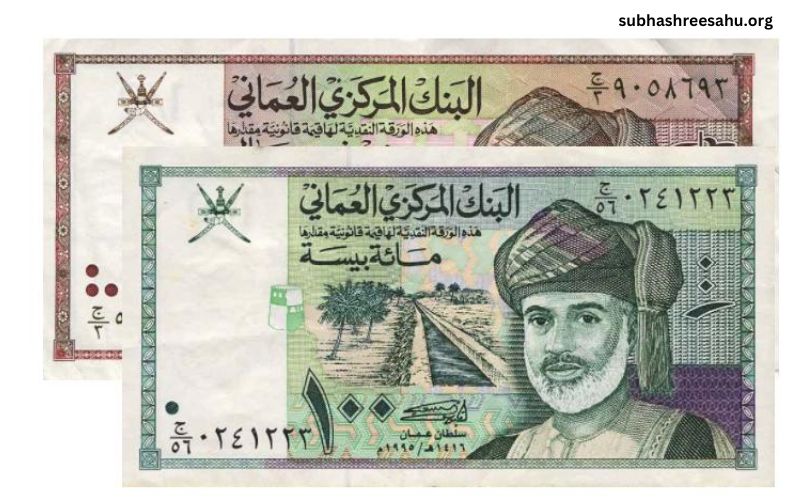In the intricate tapestry of global finance, currency exchange rates play a pivotal role in shaping economic interactions. One such exchange of interest is the conversion of 100 Omani Riyal (OMR) to Indian Rupees (INR). This conversion is not only significant for travelers and expatriates but also holds substantial importance in international trade, remittances, and investment decisions.
The Omani Riyal and the Indian Rupee: An Overview
The Omani Riyal is the official currency of the Sultanate of Oman, a country located on the southeastern coast of the Arabian Peninsula. The currency code for Omani Riyal is OMR, and it is subdivided into 1000 baisa. The OMR is known for its strength and stability, reflecting Oman’s robust economic structure, which is heavily reliant on oil revenues.
On the other hand, the Indian Rupee, denoted by the symbol ₹ and the currency code INR, is the official currency of the Republic of India. The Rupee is subdivided into 100 paise. The Indian economy is diverse, encompassing agriculture, manufacturing, and services, with significant contributions from IT and software services. The value of the Indian Rupee is influenced by a myriad of factors including inflation rates, fiscal policies, and foreign exchange reserves.
Historical Context and Exchange Rate Dynamics
Historically, the exchange rate between the Omani Riyal and the Indian Rupee has been influenced by various economic factors, including oil prices, trade balances, and geopolitical stability. Oman’s economy, being heavily dependent on oil, often sees its currency influenced by global oil prices. India, a major importer of oil, feels the ripple effects of these price changes in its currency valuation.
As of June 2024, the exchange rate typically hovers around 1 OMR = 214 to 220 INR. This means that 100 OMR would convert to approximately 21,400 to 22,000 INR. These rates are indicative and fluctuate based on market conditions, central bank policies, and economic indicators from both nations.
Factors Influencing the Exchange Rate
- Oil Prices: Oman’s economy is significantly influenced by oil. High oil prices strengthen the Omani Riyal due to increased national revenue. Conversely, lower oil prices can weaken it, impacting the exchange rate with the Indian Rupee.
- Inflation Rates: Differing inflation rates between Oman and India affect the purchasing power of their currencies. Higher inflation in India compared to Oman typically results in a weaker Rupee against the Riyal.
- Economic Policies: Fiscal and monetary policies, including interest rates and government spending, influence currency values. India’s policies aimed at controlling inflation and promoting economic growth can impact the Rupee’s value against the Omani Riyal.
- Trade and Investment Flows: Trade balances and foreign investment inflows also play a crucial role. A trade surplus or significant foreign investments in Oman can strengthen the Riyal, whereas a trade deficit in India can weaken the Rupee.
- Geopolitical Stability: Stability in the region, especially in the Middle East, can influence investor confidence and, consequently, the strength of the Omani Riyal. Political instability can lead to currency depreciation.
Practical Implications of the Conversion
- For Expatriates: A significant number of Indian expatriates work in Oman, remitting money back to their families in India. Understanding the exchange rate helps them optimize the timing and amount of their remittances to maximize value.
- For Businesses: Companies engaged in trade between India and Oman must navigate exchange rates to price their goods and services competitively. A favorable exchange rate can enhance profit margins.
- For Travelers: Tourists and business travelers benefit from understanding exchange rates to manage their expenses and budget effectively during their stay.
The Process of Conversion
Converting Omani Riyal to Indian Rupees can be done through various channels including banks, currency exchange services, and online platforms. Here’s a brief overview of the process:
- Banks: Most major banks offer currency conversion services. Customers can exchange OMR for INR at the prevailing rate, often with a small commission or fee.
- Currency Exchange Services: Dedicated currency exchange kiosks and companies provide competitive rates and are conveniently located at airports and urban centers.
- Online Platforms: Digital currency exchange platforms and mobile apps provide real-time exchange rates and the convenience of online transactions.
Tools and Resources
Several tools and resources are available to monitor and understand exchange rates:
- XE.com: A popular website offering real-time exchange rate information and conversion calculators.
- Oanda: Provides historical exchange rate data and currency conversion tools.
- Central Bank Websites: The Central Bank of Oman and the Reserve Bank of India publish official exchange rates and economic indicators.
Economic Implications and Future Outlook
The exchange rate between the Omani Riyal and Indian Rupee has broader economic implications. For Oman, maintaining a stable exchange rate is crucial for economic stability and investor confidence. For India, managing the exchange rate is vital for controlling inflation, supporting exports, and ensuring economic growth.
Looking ahead, several factors could influence the future exchange rate between OMR and INR:
- Global Economic Recovery: Post-pandemic recovery, global economic trends, and oil price movements will continue to play significant roles.
- Technological Advancements: Innovations in fintech and digital currencies could streamline and impact traditional exchange rate mechanisms.
- Policy Reforms: Economic reforms and policy adjustments in both countries aimed at enhancing economic stability and growth will influence the exchange rate dynamics.
Conclusion
Understanding the conversion of 100 Omani Riyal to Indian Rupees requires a grasp of various economic, political, and social factors. This knowledge is essential for expatriates, businesses, travelers, and policymakers engaged in the economic interplay between Oman and India. As the global economic landscape evolves, staying informed about currency exchange rates and the underlying factors driving these changes remains crucial for making informed financial decisions.

